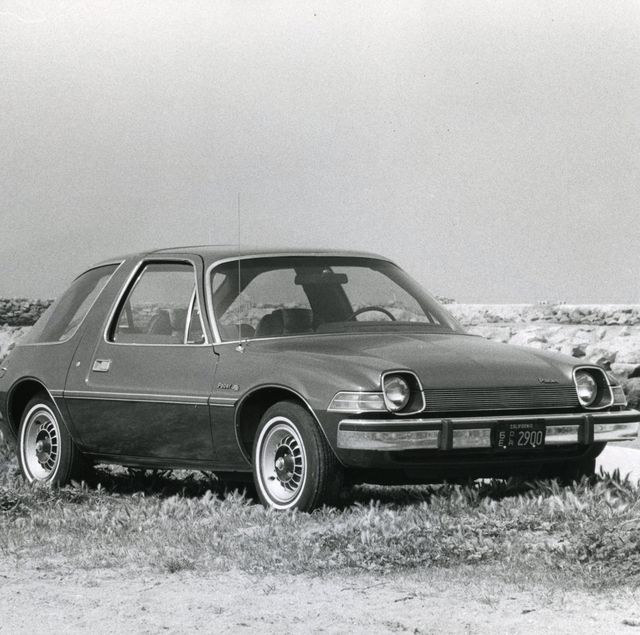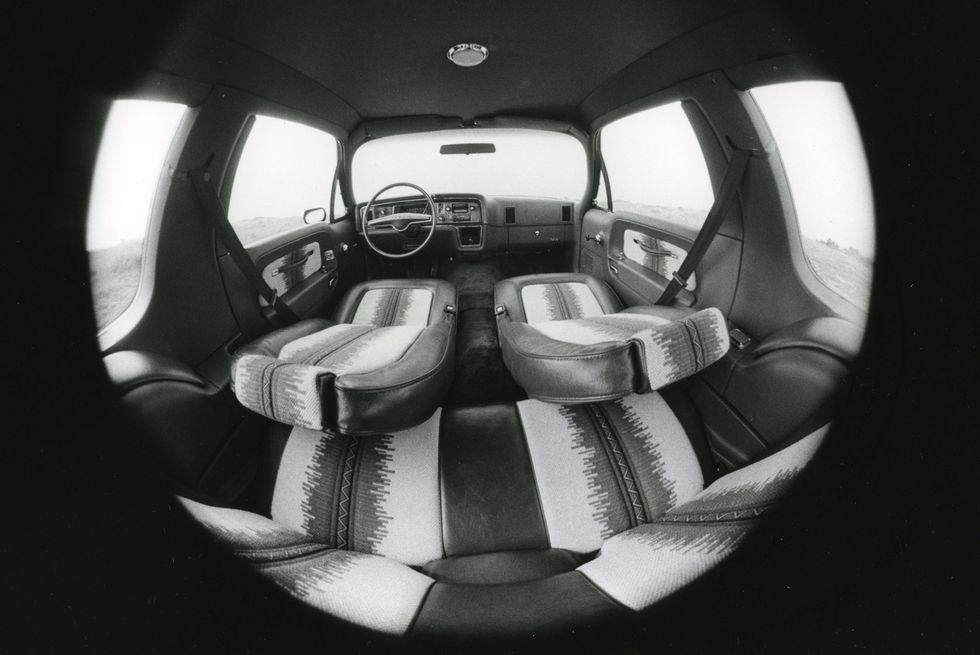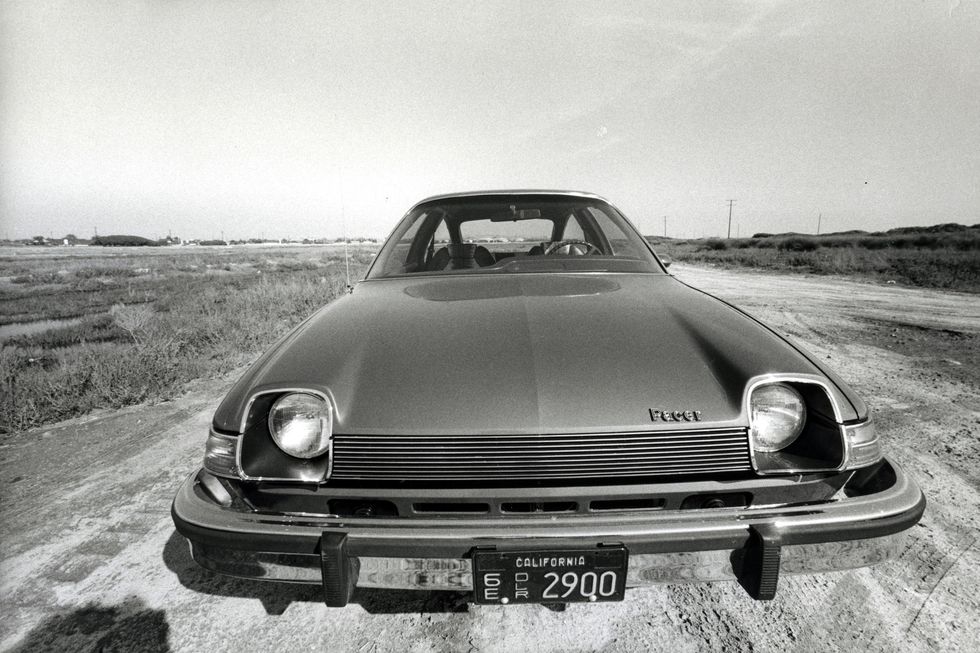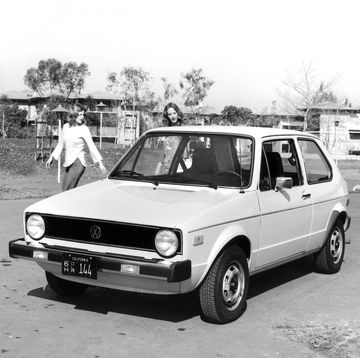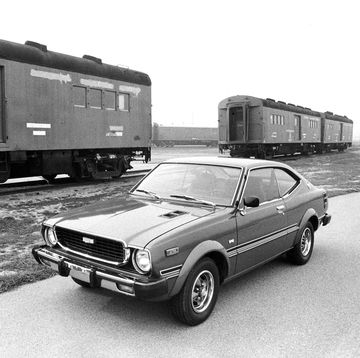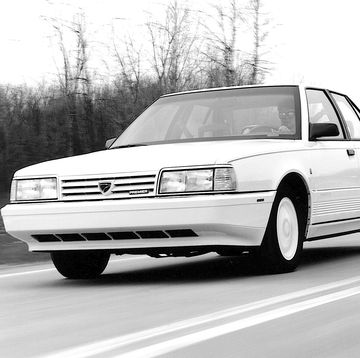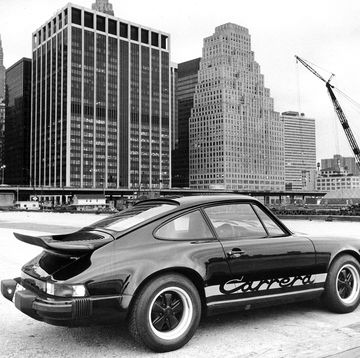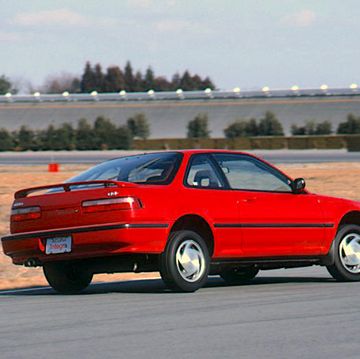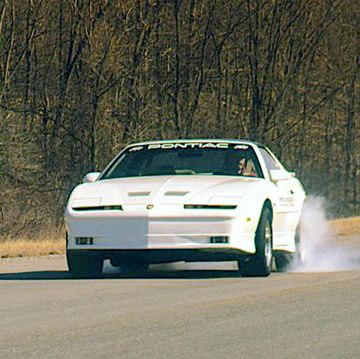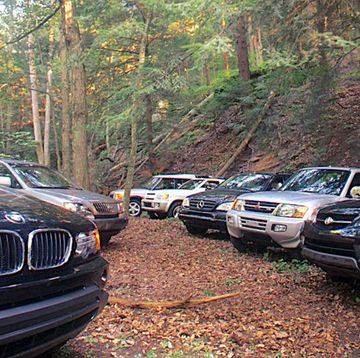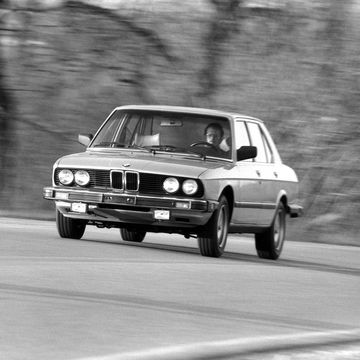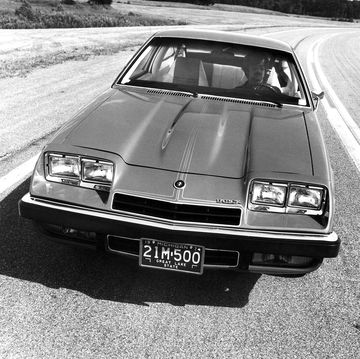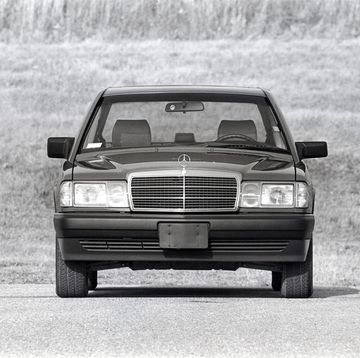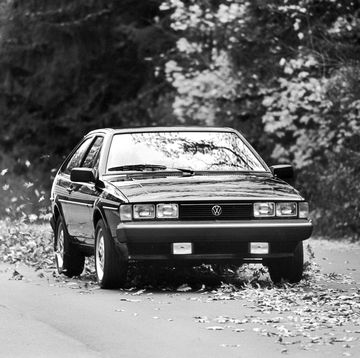From the June 1975 issue of Car and Driver.
There is an excitement-generating quality about American Motors' new Pacer that calls to mind the days when we spent most of the fall frothing at Detroit's new cars as they appeared one by one in our hometown showrooms. The Pacer is lovable, and you feel an instinctive urge to take it home—like a rubber ducky, to put in your bathtub to play with. Detroit has finally issued a car to which people are reacting.
The Pacer was supposedly designed from the inside out, the theory being that claustrophobic Americans who have thus far resisted small cars with small interiors will go along with a car that is essentially an intermediate with the ends lopped off. If early indications are to be relied upon, the theory is sound. The car seems destined to sell well, if for no other reason than that the buying public seems ready for a new approach to motoring. This the Pacer is. Regarded as a beginning step in the proper direction, the Pacer is as encouraging an offering as Detroit has produced in some time.
For once, an automobile advertising campaign is telling the unvarnished truth: A large man is completely comfortable in the driver's seat or as a front-seat passenger. There is ample legroom, and were it not for the fact that your left knee comes to rest against the window crank, matters would leave little to be desired. The steering wheel is well placed and provides the driver with the proper amount of elbow crook; every control is not only within reach but also visible and readable.
The same big man can survive in a condition approaching comfort in the rear seat, too. Average-size people will find the rear seat at least as comfortable and roomy as those to be found in the new "precision-size" cars. Compared to the rear compartment of such cars as the Chevy Monza and Ford Mustang II, the Pacer appears to have the proportions of a ballroom. Headroom is the only dimension lacking, but in light of its other benefits, the rear area is still a minor triumph.
Interior finish in the Pacer is attractive, if rather utilitarian, and consists largely of molded plastic panels. The dashboard sits well away from the seats, lending reinforcement to the already considerable atmosphere of spaciousness. The front seats are large, well-proportioned, and sturdy; the rear seats, like all rear seats, are certainly not as comfortable but are more than serviceable—certainly an improvement over the average small-car rear seat. With a body area that's almost one-third glass, visibility is one of the car's strongest suits.
Looking at the innovative Pacer silhouette, it's easy to conjure up visions of scooting through traffic like a family-size Honda Civic. Sadly, this is not the case. There are two engines available in the Pacer, both inline-sixes (232 and 258 cubic inches). If you demand head-snapping acceleration, neither is equal to the task.
If, however, you are content to motor along in a sane and economical fashion, all is not lost. The Pacer will handle this kind of service easily, if unspectacularly. But it is slow enough to make it all too obvious that the fun, the outright enjoyment, its peppy appearance promises simply is not there. Certainly not with the larger engine and the Chrysler-built three-speed automatic. With this powertrain, the Pacer took 20.4 seconds to negotiate the quarter-mile, attaining a speed of only 65.8 mph.
The Pacer's steering, handling, and ride are traditionally American. Rack-and-pinion steering has been made a part of the Pacer's standard equipment, but it has been damped to the point of numbness. The car's front cross-member is damped and insulated also, both from the body and from the engine, to help lower the noise level. If ride quality concerns you, you will find the Pacer excellent. While there is admitted insulation from the road, the sensation is not at all like a wallowing full-size car with mushy suspension—it is like a good, well-ordered intermediate car.
The Pacer's handling suffers a bit from its weight (3432 pounds) and its high center of gravity, which contribute to the car's pronounced understeer in low-speed cornering. The short wheelbase and wide track do, however, aid high-speed maneuvering.
The Pacer's braking could stand improvement, again because of the car's high gravity center and heaviness. There is an alarming amount of dive under hard braking, giving you the impression that the front bumper is about to tuck under and roll up. The Pacer required 205 feet to stop from 70 mph. By comparison, a Mazda stops in 192 feet while the Mustang II, another middleweight, takes 213 feet of pavement. The car appears set up for optimum braking with a full load, which ought to be reconsidered in light of prevailing motoring habits. With too much rear brake bias, the rear wheels tend to lock. More bias on the front discs would probably help.
Here's what to consider if the Pacer personality appeals to you: You'll get a car made largely from proven components; a car that you can enter or exit without braining yourself; a car that you can sit in and see out of with ease and enjoyment; a car that is pleasing to operate and offers reasonable economy. Granted, you will not get eye-popping acceleration and sports-car handling, but you will get a car that is a new design representing a new approach to American motoring. The small car for the person who doesn't like small cars may at last be in our midst.
Specifications
Specifications
1975 AMC Pacer D/L
Vehicle Type: front-engine, rear-wheel-drive, 4-passenger, 2-door hatchback
PRICE
Base/As Tested: $3404/$5233
Options: air conditioning, $399.95; D/L package, $289; automatic transmission, $239.99; AM/FM stereo 8-track radio, $239; announcement package 2 (front sway bar, steel belted radial tires, power front disc brakes), $203.45; announcement package 1 (tinted windows, power steering), $139.00; styled road wheels, $85.05; 258-cubic inch 1-barrel engine; $69.00; rear window washer-wiper, $49.95; visibility group, $49.95; light group, $34.95; door vent window, $29.95
ENGINE
pushrod inline-6, iron block and head
Displacement: 258 in3, 4230 cm3
Power: 95 hp @ 3050 rpm
Torque: 179 lb-ft @ 2100 rpm
TRANSMISSION
3-speed automatic
CHASSIS
Suspension, F/R: control arm/rigid axle
Brakes, F/R: 10.8-in vented disc/9.0-in drum
Tires: Goodyear Custom polysteel radial
DIMENSIONS
Wheelbase: 100.0 in
Length: 171.5 in
Width: 77.0 in
Height: 53.6 in
Curb Weight: 3432 lb
C/D TEST RESULTS
30 mph: 4.4 sec
60 mph: 16.2 sec
1/4-Mile: 20.4 sec @ 66 mph
80 mph: 37.7 sec
Top Speed (observed): 84 mph
Braking, 70–0 mph: 205 ft
Roadholding, 300-ft Skidpad: 0.80 g
EPA FUEL ECONOMY
13-17 mpg

William Jeanes is a former editor-in-chief and publisher of Car and Driver. He and his wife, Susan, a former art director at Car and Driver, are now living in Madison, Mississippi.
